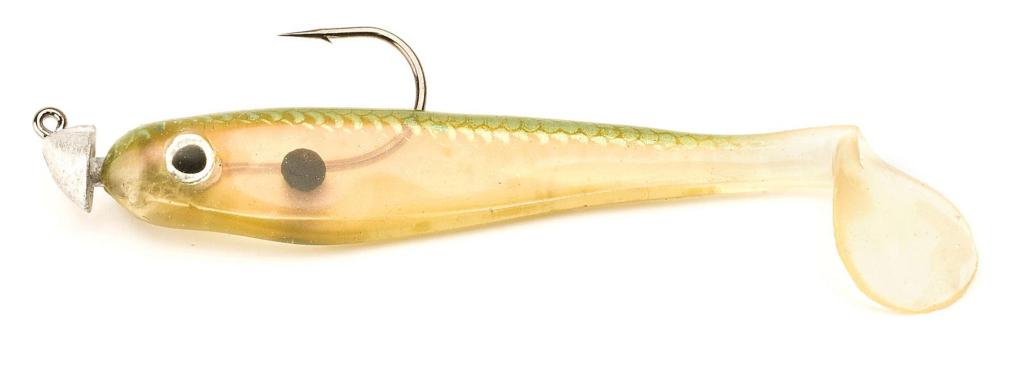Why efficiency matters

I hate “slow swimbaits” and “fast swimbaits.” I hate “aggressive topwaters” and “subtle topwaters.”
What I like are swimbaits and topwaters that can be fished at many speeds and with many degrees of aggressiveness. And that’s something I think more anglers should think about when choosing and evaluating tackle.
Last summer, I tested a bunch of cool new topwater lures. One that I really fell in love with is a custom popper made by my former co-worker, currently an FLW Bass Fishing magazine contributor, Sean Ostruszka. Sean owns a small tackle company called Fiddler Lures, and his popper (unnamed as of yet) is a big-mouth topwater about the size of a Rebel Pop-R P-70. It’s made of balsa and has an internal one-knocker style rattle.
I love this bait because it can be fished with a variety of cadences, speeds and aggressiveness levels. I can jerk it hard and spit water 3 feet, or twitch it softly and walk it with tight turns and no spitting at all. I can vary the amount of slack in the line and change the side-to-side distance that it walks. I can even virtually walk it in place over a good-looking piece of cover.
The other great thing about it is that it is extremely easy to walk – much easier than many other poppers and on par with many stick bait style walkers.
As it applies to fishing, the popper excels because I don’t have to change out baits when conditions change. I can tie on one topwater lure and cover just about any situation. I can cast it a mile into a schooling frenzy and walk it, spitting and churning, through the fray. I can sling it down a bank and walk it with wide-gliding movements. Or I can pitch it to a piece of brush and bloop it with long pauses between tugs.
This “efficiency factor” is something I also evaluate in every swimbait I pick up. The first question I usually ask is “How slow can I swim it and still have the action it was intended to create?” If a swimbait has no action at slow speeds, I’m usually not interested. On the flip side, some of my favorite swimbaits blow out at fast speeds. They roll on their sides or spiral and aren’t effective. This limits the conditions where they can be used.
Granted, some swimbaits are designed for very, very subtle tail actions for use in clear water. Those are specialty lures, in my opinion (and still very fun to throw). But for a tournament lure, I want a lure I can tie on in the morning and fish in the muddy shallows upriver and the clear rocky stretches by the dam.
Another thing to consider is how a lure acts at the far end of the cast and as it approaches the boat. If a lure has to be retrieved 5 yards before it starts swimming properly and it rises out of the strike zone 5 yards from the boat, you just lost 10 yards of “fishable cast.” David Dudley talked about this fact in our Nov/Dec 2012 issue, when he described his system for testing new baits using a snorkel and a college swimming pool. He jumps in the pool because he wants to see what a lure really looks like in the water, and how it performs throughout the cast. He quickly whittled his selections down to the most efficient lures.
So what’s a real-world example of an inefficient lure? Many swimbaits have to be tugged or sped up early in the retrieve to get the tail wobbling. Buzz baits have to be burned early in the cast to get them up on the surface, and some are notorious for not “buzzing” for the first few feet. Crankbaits that dive very flat or rise very early as they near the boat are often completely missing a chunk of the strike zone. Soft plastics that foul up easily or don’t stay on the hook can be horribly inefficient because they result in wasted casts or time spent fixing the rig.
Great anglers are efficient anglers. And that all starts with lure selection and rigging. Think about it as you try new baits and evaluate old ones this season.